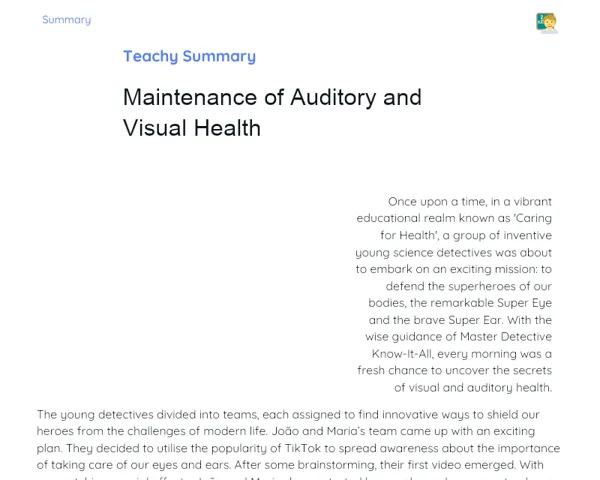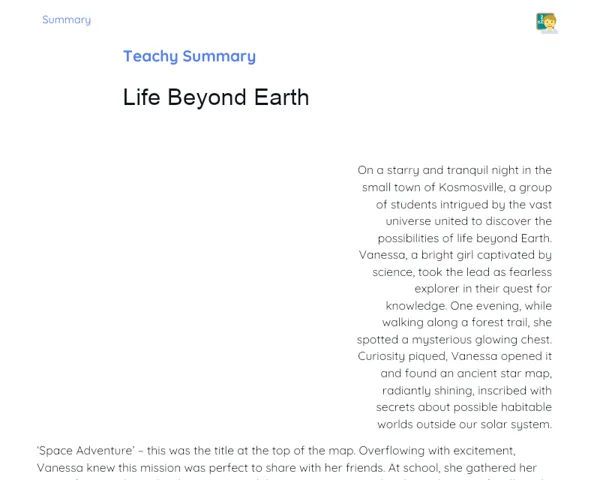Summary Tradisional | Main Phases of the Moon
Contextualization
The Moon, our closest celestial companion, undergoes a transformation in its appearance over a cycle of about 29.5 days. These changes, noted from our vantage point on Earth, are known as lunar phases. The primary phases include the New Moon, Waxing Crescent, Full Moon, and Waning Crescent. Each phase arises from the relative positions of the Earth, the Moon, and the Sun, and how sunlight reflects off the Moon as it orbits our planet.
Understanding the Moon's phases is vital, as they not only impact natural events like tides but have historically driven the creation of calendars and the organization of human activities. Many ancient cultures, including Indian, Egyptian, and Mayan societies, adapted the lunar cycle to decide agricultural timings for planting and harvest. Observing the Moon's phases can deepen our connection to the Earth's natural rhythms and expand our understanding of the universe.
To Remember!
Lunar Cycle
The lunar cycle lasts approximately 29.5 days, marking the time the Moon takes to complete all its phases and return to its starting point. This cycle arises as the Moon orbits the Earth, with varying portions illuminated by the Sun and visible from our planet. Over the ages, the periodic nature of the lunar cycle has been documented, leading to lunar-based calendars.
The predictability of the lunar phases has been crucial for numerous cultures throughout history, as they have relied on this knowledge to plan agricultural activities, festivals, and other significant milestones.
Additionally, understanding the lunar cycle is essential in astronomy and space exploration. For instance, it influences landing conditions during lunar missions and impacts the visibility of other celestial objects during stargazing.
-
The lunar cycle lasts approximately 29.5 days.
-
The phases of the Moon result from its orbit around the Earth.
-
The lunar cycle is predictable and follows a consistent rhythm.
New Moon Phase
The New Moon happens when the Moon is positioned between the Earth and the Sun, with its illuminated side facing away from us. Consequently, the Moon is nearly invisible from Earth, as the sunlight doesn't reach the side that we can see.
During the New Moon, the Moon and Sun coexist on the same side of the sky, which can give rise to a solar eclipse, where the Moon obscures the Sun's light. However, solar eclipses are infrequent due to the tilt of the Moon's orbit in relation to the Earth's.
The New Moon signifies the start of the lunar cycle and is succeeded by the Waxing Crescent. This phase is often linked to new beginnings and rejuvenation in various cultures and spiritual traditions.
-
The New Moon occurs when the Moon is between the Earth and the Sun.
-
The side of the Moon facing the Earth is shadowed, rendering it almost invisible.
-
It can lead to a rare solar eclipse.
Waxing Crescent Phase
The Waxing Crescent follows the New Moon, marking the phase where the Moon begins to move away from its position between the Earth and the Sun. At this stage, a small segment of the Moon starts to catch sunlight, forming a delicate crescent in the nocturnal sky.
As days pass, this illuminated portion gradually expands, making the Moon more visible. Known as a young crescent, the Waxing Crescent symbolizes growth and advancement.
This phase can be seen shortly after sunset and shifts westward in the night sky as the lunar cycle continues.
-
The Waxing Crescent phase occurs after the New Moon.
-
A small part of the Moon is illuminated, creating a crescent shape.
-
The illuminated part increases progressively each day.
Full Moon Phase
The Full Moon occurs when the Earth is located between the Moon and the Sun, resulting in the entire side of the Moon facing Earth being fully illuminated. At this time, the Moon shines as a bright, complete circle in the night sky.
The Full Moon is the brightest phase and is easily seen with the naked eye. This event takes place around the mid-point of the lunar cycle, approximately 14-15 days after the New Moon. Historically, the Full Moon has been linked with numerous myths and narratives, often symbolizing completeness, strength, and transformation.
During this phase, lunar eclipses may happen when the Earth casts its shadow on the Moon, offering captivating views of our solar system in action, observable from vast areas on Earth.
-
The Full Moon occurs with Earth positioned between the Moon and the Sun.
-
The entire face of the Moon visible from Earth is brightly lit.
-
The Full Moon is the most luminous phase and occurs around the mid-cycle.
Waning Crescent Phase
The Waning Crescent appears after the Full Moon, as the illuminated section of the Moon starts to diminish. During this phase, the Moon seems to shrink each night, forming an inverted crescent in the sky.
Also known as an old waning crescent, this phase signifies a time for introspection and decline. The Waning Crescent becomes visible late at night and early in the morning, just before sunrise.
The fading brightness of the Moon creates perfect stargazing conditions, as it reduces light interference, allowing for a better view of stars and planets. The Waning Crescent completes the lunar cycle, leading back into the New Moon phase.
-
The Waning Crescent follows the Full Moon.
-
The illuminated part of the Moon shrinks, forming an inverted crescent.
-
The Waning Crescent can be seen late at night and early morning.
Key Terms
-
Lunar Cycle: The span of about 29.5 days during which the Moon transitions through all its phases.
-
New Moon: The phase when the Moon is between the Earth and the Sun, with the illuminated side facing away from us.
-
Waxing Crescent: The phase following the New Moon where the illuminated part of the Moon starts to increase.
-
Full Moon: The phase when the entire visible side of the Moon is illuminated.
-
Waning Crescent: The phase occurring after the Full Moon when the illuminated section begins to decrease.
Important Conclusions
The phases of the Moon present a captivating astronomical spectacle that unfolds in a predictable cycle of around 29.5 days. During this time, the Moon experiences four key phases: New Moon, Waxing Crescent, Full Moon, and Waning Crescent, each distinct in its characteristics and visibility. Familiarity with these phases enriches our appreciation for the beauty of the night sky and helps us understand the Moon's impact on natural phenomena, like ocean tides, and its historical role in the development of calendars.
Being aware of the Moon’s phases connects us to diverse ancient cultures that utilized the lunar cycle to guide their agricultural practices and religious observances. This historical perspective enhances our understanding and helps us appreciate the Moon's significance to humankind through the ages.
Finally, observing the Moon's phases serves as an excellent gateway into the field of astronomy, igniting curiosity about the universe around us. The Moon not only brightens our evenings but also provides a glimpse into comprehending our place within the cosmos. We encourage everyone to keep exploring and deepening their understanding of these celestial mysteries.
Study Tips
-
Make it a habit to observe the Moon regularly and maintain a lunar diary to track its phases. This practice will help you grasp its periodic nature and identify each phase.
-
Explore books and articles on astronomy that delve into the Moon and other celestial bodies. Rely on credible sources for a deeper understanding.
-
Leverage astronomy apps that display the Moon’s current position and phase, providing additional insights about the lunar cycle and fascinating astronomical phenomena.



